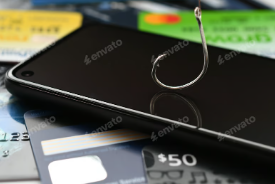One of the more insidious methods targeting unsuspecting individuals is known as smishing. But what exactly is smishing, and how can you protect yourself from it?
What is Smishing?
Smishing, a portmanteau of “SMS” (Short Message Service) and “phishing,” refers to a type of scam where cybercriminals send fraudulent text messages (SMS) to trick recipients into revealing personal information or downloading malicious software. These messages typically appear to come from legitimate sources, such as banks, government agencies, or even familiar companies, which makes them particularly deceptive.
How Does Smishing Work?
Smishing scams often employ various tactics, including:
- Urgent Warnings: Messages that claim your bank account is compromised or that immediate action is required can incite panic and lead to hasty decisions.
- Fake Promotions: These might include messages about winning contests or receiving gifts, prompting individuals to click on suspicious links.
- Questionable Links: Most smishing texts contain URLs that lead to phishing websites designed to collect sensitive information like passwords, social security numbers, or credit card details.
Recognizing Smishing Attempts
Being able to identify smishing attempts is crucial for protecting yourself. Look out for these signs:
- Messages from unknown numbers or strange sender IDs.
- Poor grammar or spelling mistakes.
- Urgent requests for personal information.
- Links that seem out of context or suspicious.
How to Protect Yourself from Smishing
- Do Not Engage: Avoid responding to suspicious texts or clicking on links. Instead, verify the message independently through official channels.
- Use Security Software: Install comprehensive security solutions on your devices that offer protection against phishing attempts.
- Educate Yourself and Others: Staying informed about smishing tactics is one of the best defenses. Share this knowledge with friends and family to help them stay vigilant.
- Report Suspicious Messages: Many mobile carriers allow you to report junk or phishing texts. Forward them to your carrier’s short code (usually 7726) to help combat these scams.
As technology evolves, so do the tactics used by scammers. Smishing is a growing threat that requires constant vigilance. By understanding what smishing is and how to recognize and prevent it, you can better protect yourself from falling victim to these malicious schemes. Stay safe and always think before you click!
